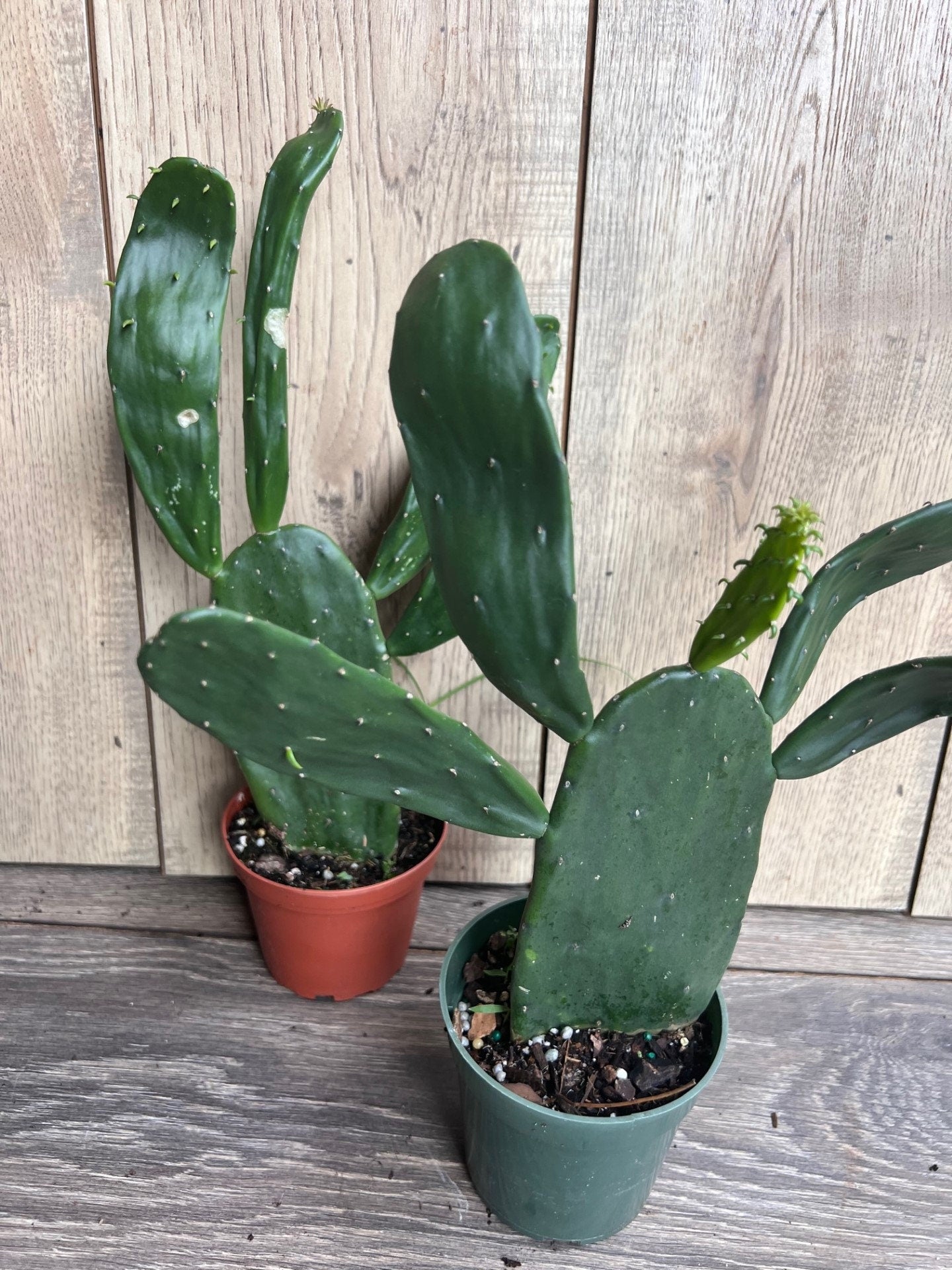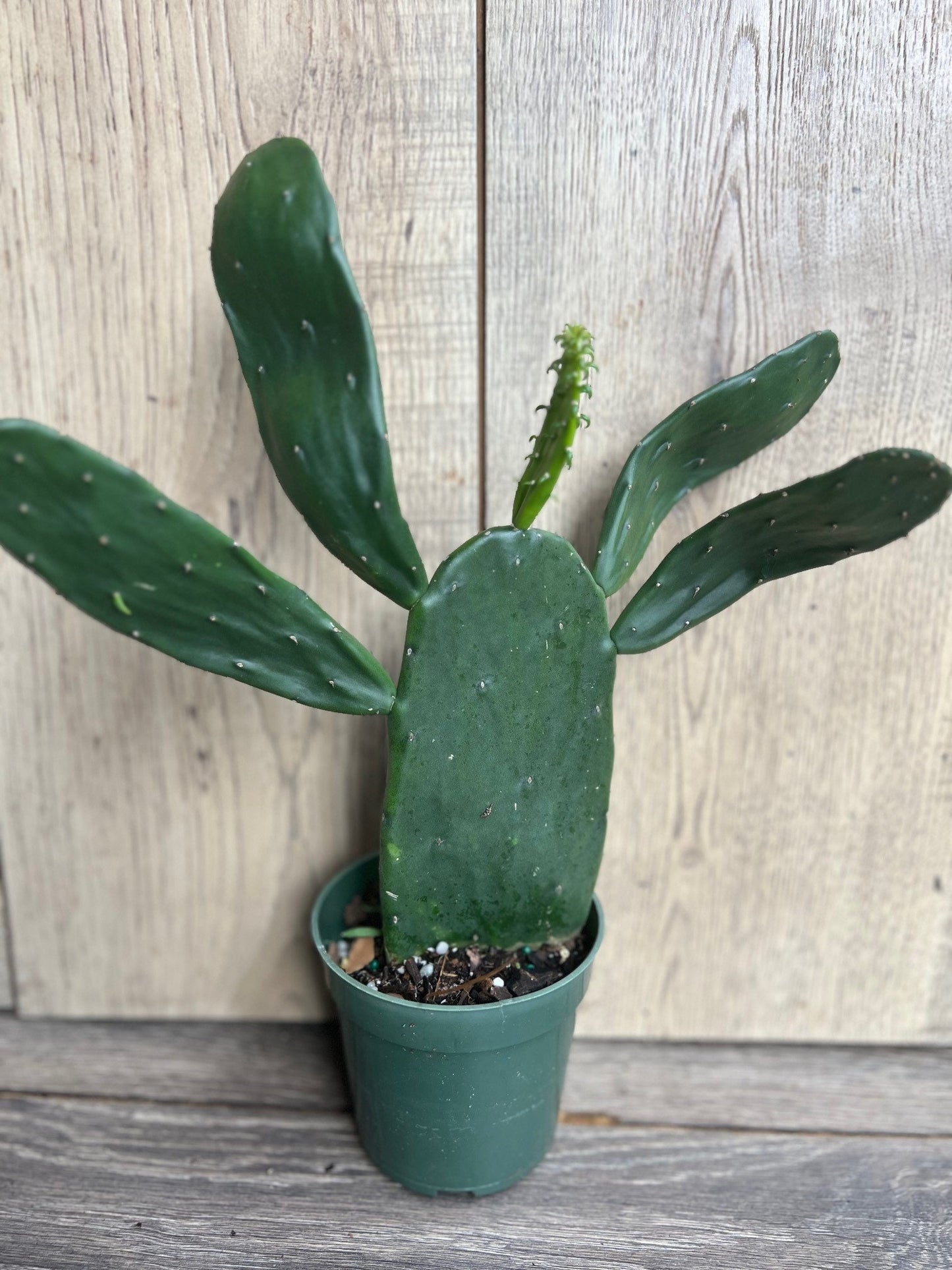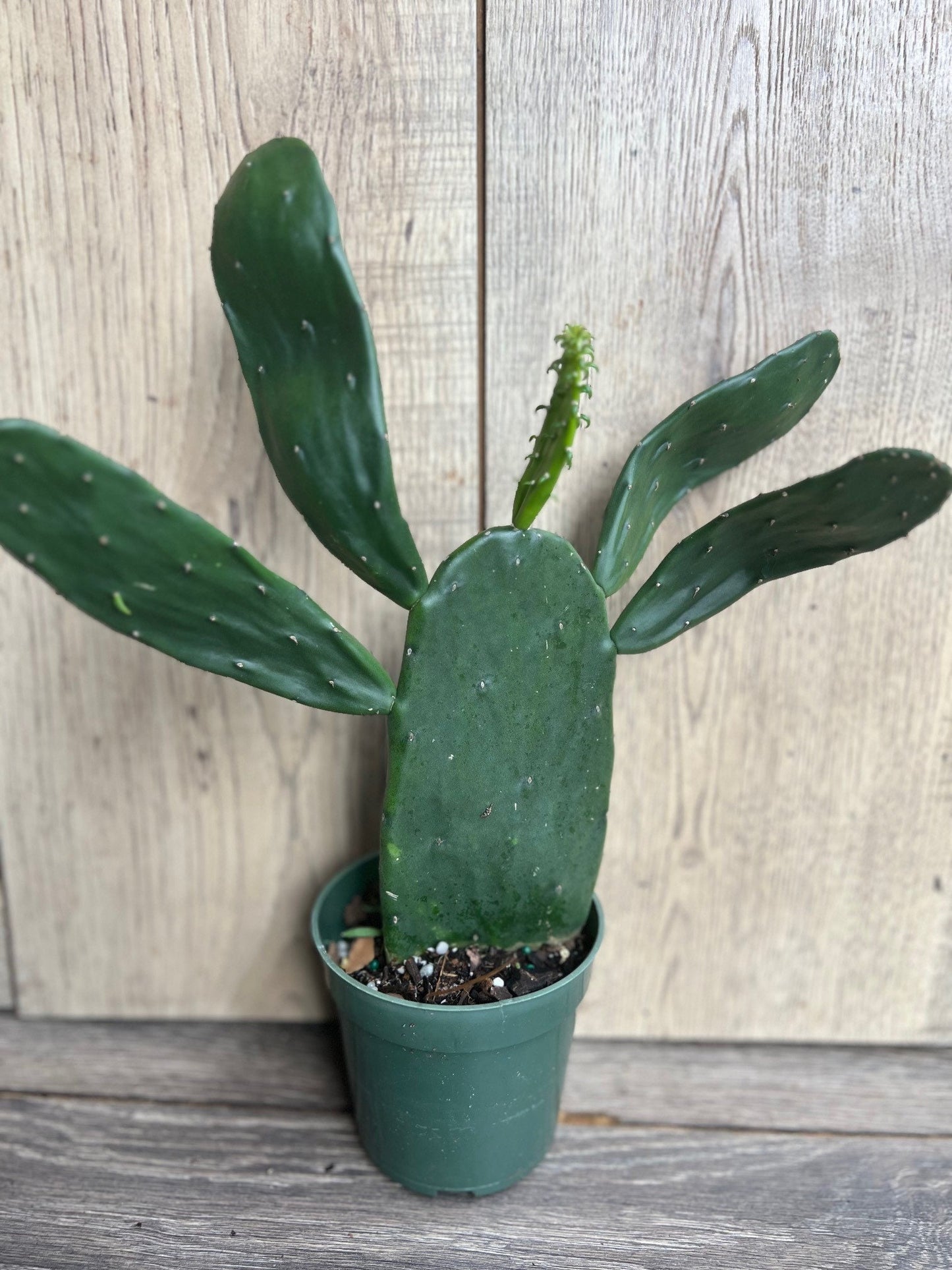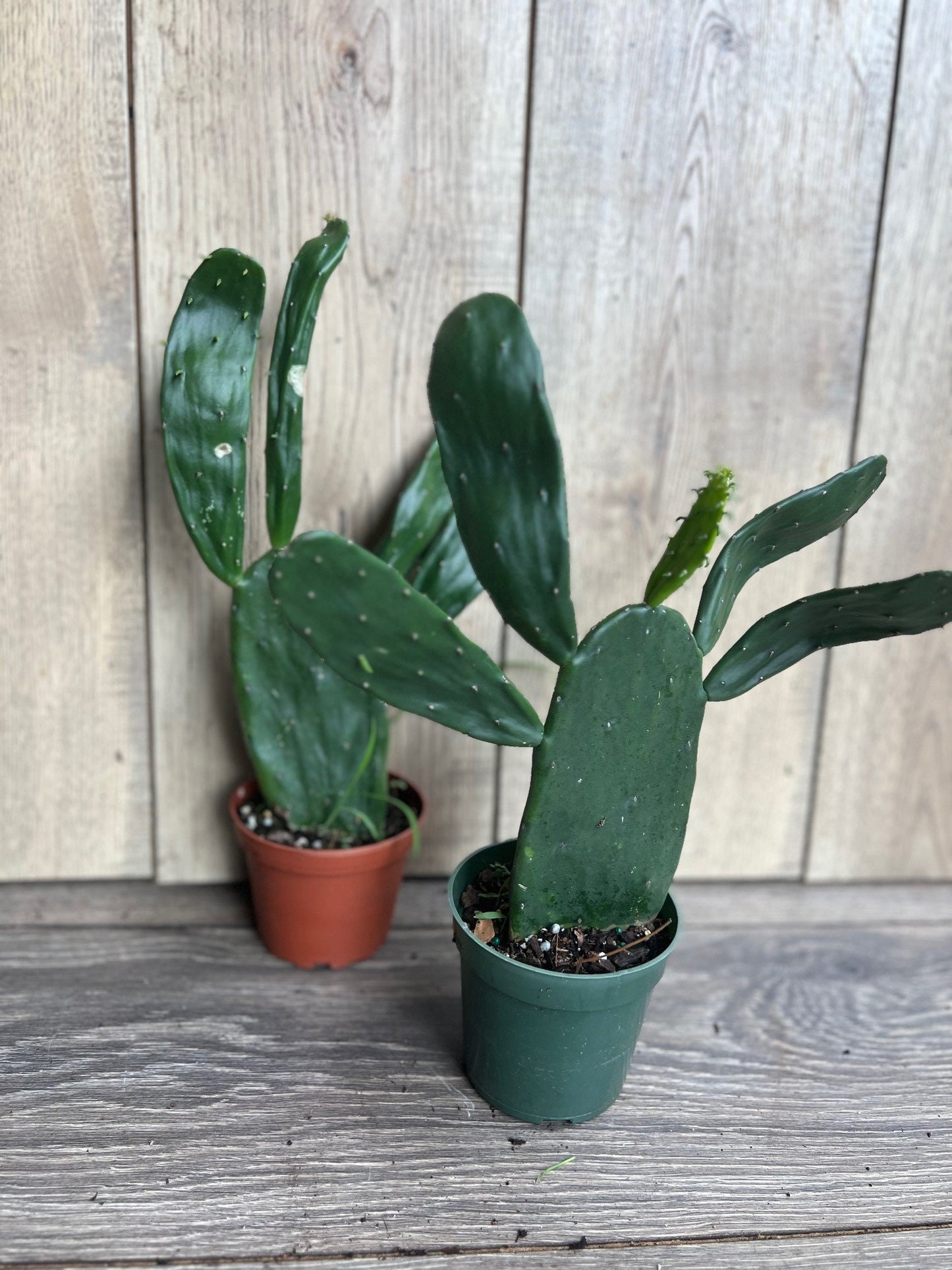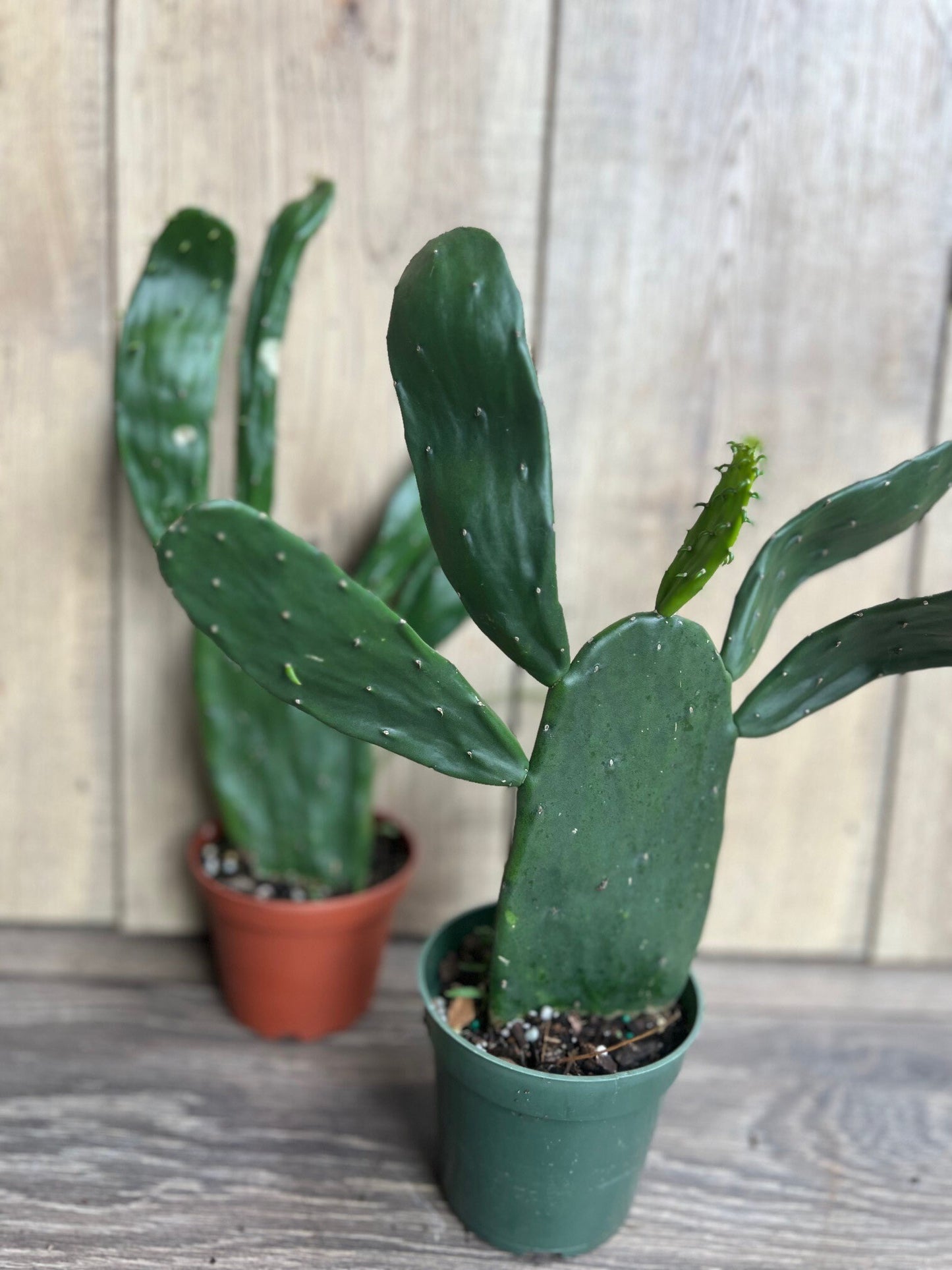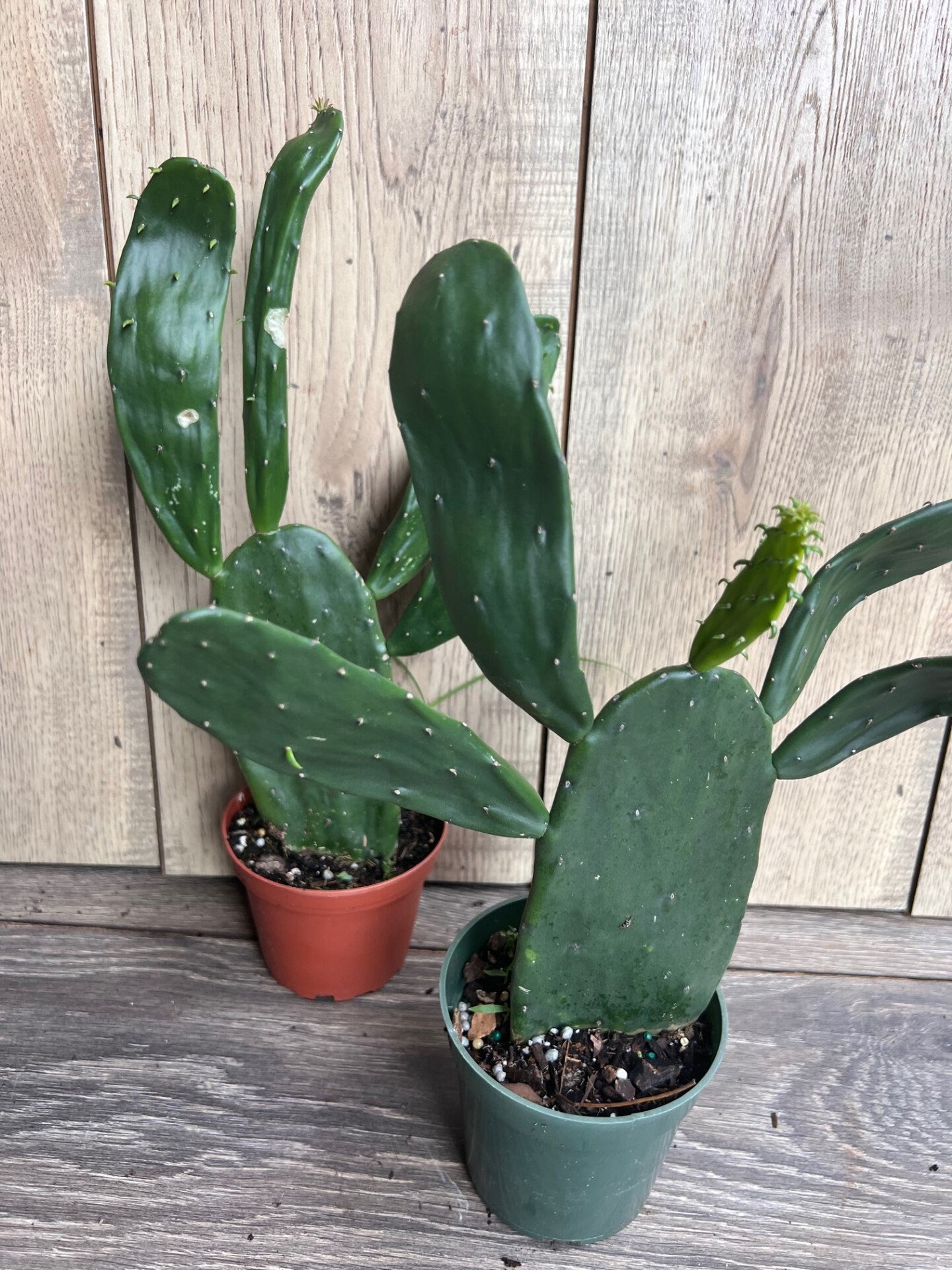Opuntia, prickly pear in 4" Pot, opuntia cactus
Opuntia, prickly pear in 4" Pot, opuntia cactus
Couldn't load pickup availability
You will receive one Opuntia cactus in a 4" pot, similar to the pictures.
About Opuntia (Prickly Pear)
Opuntia, commonly known as prickly pear, is a hardy and drought-tolerant cactus native to the Americas. Its most recognizable feature is its flattened, paddle-like segments (pads) covered in spines or tiny glochids (barbed spines). These spiny pads are both ornamental and edible, and the cactus is known for its colorful, vibrant flowers that can range from yellow and orange to red and purple.
Prickly pears are popular for their adaptability in xeriscaping, desert gardens, and container collections. They are easy to care for and can thrive in harsh conditions, with their sweet, watermelon-like fruits called tuna offering additional culinary appeal.
Light Requirements
- Opuntia thrives with at least 6 hours of full sun daily.
- If grown indoors, place it near a south- or west-facing window for optimal sunlight.
- Best suited for hot, sunny climates (USDA zones 9–11).
Watering
- Opuntia prefers to dry out completely between waterings.
- Water thoroughly only when the soil has completely dried.
- Reduce watering during colder months as the cactus enters dormancy.
- Ensure proper drainage to avoid root rot—never let the plant sit in standing water.
Soil Requirements
- Sandy or rocky soil is ideal for Opuntia.
- Use a cactus-specific potting mix or add sand/perlite to ensure proper aeration and drainage.
- Slightly acidic to neutral soil (pH 6.0 to 7.5) is best.
Temperature Needs
- Prefers temperatures between 70°F to 100°F (21°C to 38°C).
- Sensitive to frost—bring indoors or cover during cold weather.
Fertilizing
- During the growing season (spring and summer), fertilize once a month with a diluted, balanced water-soluble fertilizer.
- Avoid fertilizing during the colder months when Opuntia is dormant.
Pruning
- Remove dead or damaged pads as needed to maintain the plant's appearance and health.
- Use gloves or tongs to avoid contact with the cactus' spines and glochids during pruning.
Repotting
- Repot every 2-3 years when Opuntia outgrows its container.
- Choose a pot that is 1-2 inches larger in diameter with drainage holes.
- Use fresh, well-draining cactus soil during repotting to maintain root health.
Pests & Common Problems
Common Pests:
- Mealybugs
- Scale insects
- Aphids
Treatment: Use neem oil or insecticidal soap as necessary.
Root Rot:
Overwatering can lead to root rot. Ensure the pot has proper drainage and avoid excessive moisture.
Propagation
Opuntia can be propagated easily from pads:
- Cut a healthy pad from the main plant.
- Allow the cut end to dry for 1-2 days to form a callus and prevent rot.
- Plant the pad in well-draining soil in a sunny location.
- Water sparingly, only when the soil has completely dried out and new growth appears.
Flowering & Fruit
Opuntia produces vibrant flowers in yellow, orange, red, or purple during the spring and summer. These flowers attract bees and other pollinators. After flowering, the cactus produces edible fruits known as tuna, which have a sweet flavor similar to a blend of watermelon and kiwi. These fruits ripen in late summer or early fall.
Why You'll Love This Cactus
Opuntia combines beauty, versatility, and practicality. Its drought tolerance, heat resistance, ornamental appeal, and edible fruits make it a great addition to:
- Xeriscaping
- Container gardening
- Adding visual appeal to your home or garden
- Culinary uses, such as juicing or traditional cuisine
With minimal care, Opuntia thrives and provides both beauty and delicious fruits for years to come.
Share
